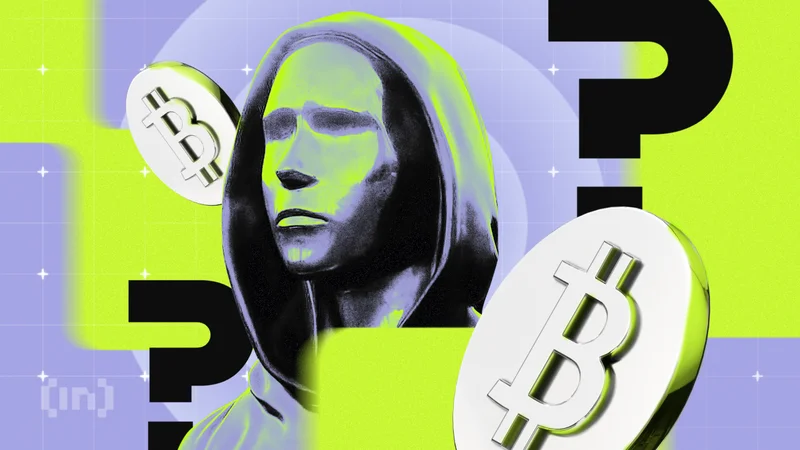Crypto: Can the Feds Tame It?
Bots Gone Wild or Calculated Crime? Crypto Trial's Verdict Could Redefine "Fair"
The Algorithm vs. the Law: A Crypto Showdown
The Manhattan courtroom is currently the stage for a high-stakes drama that could rewrite the rules of the crypto game. Two MIT alumni, James and Anton Peraire-Bueno, stand accused of siphoning off $25 million in crypto in a mere 12 seconds. The alleged method? A complex bot-on-bot scheme that's painted a picture of the Ethereum blockchain as a "bot-eat-bot hellscape." Closing arguments are looming as early as Tuesday, and the jury, a mix of five men and seven women, will ultimately decide if this was ingenious trading or outright fraud.
The stakes are undeniably high. A guilty verdict could open the floodgates for more fraud prosecutions, while an acquittal might further muddy the waters of federal crypto regulation. The brothers face a maximum of 20 years per count—conspiracy, wire fraud, and money laundering. That's a potential 60-year sentence hanging over their heads.
The defense is walking a tightrope, arguing that the Peraire-Buenos simply deployed superior bots that outsmarted the competition. It's a "boys will be boys" defense, except it's "bots will be bots." Some legal experts find this argument potentially compelling. But here's the rub: even if the bots were autonomous, the government needs to prove the intent to deceive originated from the human operators. Did the Peraire-Buenos knowingly design their bots to exploit vulnerabilities in the system? Or were they just playing the game better than everyone else? That's the million—or rather, $25 million—dollar question.
The Shifting Sands of Crypto Law
The Peraire-Bueno trial is unfolding against a backdrop of increasing scrutiny and enforcement in the crypto world. The DOJ recently announced the largest forfeiture in its history, seizing $15 billion in Bitcoin. (Yes, billion with a "b.") That's a clear signal that the feds are taking crypto crime seriously.

But the legal landscape remains murky. In May, former federal prosecutor Brian Klein managed to get a wire fraud conviction overturned against Avraham "Avi" Eisenberg, who was accused of draining $110 million through a pump-and-dump exploit. It's a reminder that these cases are far from slam dunks, even with seemingly clear-cut evidence. The question becomes, at what point does aggressive trading cross the line into illegal manipulation?
The political winds are also shifting. The Trump administration, seeking to legitimize crypto, might roll back some of the Biden-era enforcement actions. The SEC even paused an investigation into Trump supporter Justin Sun after he invested $75 million in a Trump family crypto venture. (I've looked at hundreds of these filings, and that particular sequence of events is unusual, to say the least.) And let's not forget Trump's pardon of Binance founder Changpeng Zhao, another booster of that same crypto venture.
The DOJ has secured some wins this year, including the wire fraud conviction of Douglas Jae Woo Kim and the sentencing of former Celsius Network CEO Alex Mashinsky for securities fraud. But there have been setbacks. In August, a Manhattan jury couldn't reach a verdict on whether Tornado Cash CEO Roman Storm laundered $1 billion in dirty crypto. The pattern? Prosecutors are getting mixed results.
A 2021 report estimated that around $280 million in crypto trades gets "drained" by bots every month because traders' orders are revealed before they're finalized. (That's roughly 0.002% of the total crypto market cap—a figure that's both significant and easily overlooked.) Is this just the cost of doing business in a high-speed, algorithm-driven market? Or is it a systemic vulnerability that demands stricter regulation? As Business Insider put it, the Ethereum blockchain has become a "bot-eat-bot hellscape."
So, What's the Intentionality Quotient Here?
This trial boils down to one thing: intent. Did the Peraire-Bueno brothers intend to defraud, or did they simply build a better mousetrap—or, in this case, a better bot? The outcome won't just determine their fate; it'll set a precedent for how the legal system views algorithmic trading in the crypto space. And, frankly, the data on how to prove malicious intent in a decentralized, bot-driven environment is still being written.
Related Articles
Internet Computer: What's Behind the Crypto Surge?
Internet Computer's 37% Jump: A Glimpse into the Future of Blockchain Stability? Alright, folks, buc...
The October TV Dump: A Guide to What Isn't Total Garbage
So, how soon is too soon? Apparently, the answer is "never." It's been a year since the Hamas attack...
The Aster DEX Breakthrough: What It Is and Why It’s a Glimpse Into DeFi’s Future
A number gets thrown around in technology that is so large it almost loses its meaning: a trillion....
Satoshi Nakamoto: The Founder's Identity vs. The Brand's Latest Play
Julian Vance here, cutting through the noise as usual. There's a new sneaker drop on the horizon tha...
Aster Trade's Wild Ride: CZ's Investment, DEX Upgrade, and Token Volatility
Dr. Thorne: Can CZ's "Unlucky Charm" Actually Be Crypto's Lucky Break? Okay, folks, buckle up becaus...
Grand Canyon Shutdown: What's Actually Closing and Why It's a Total Mess
So I was trying to read an article the other day, and this pop-up slams onto my screen. A "Cookie No...





